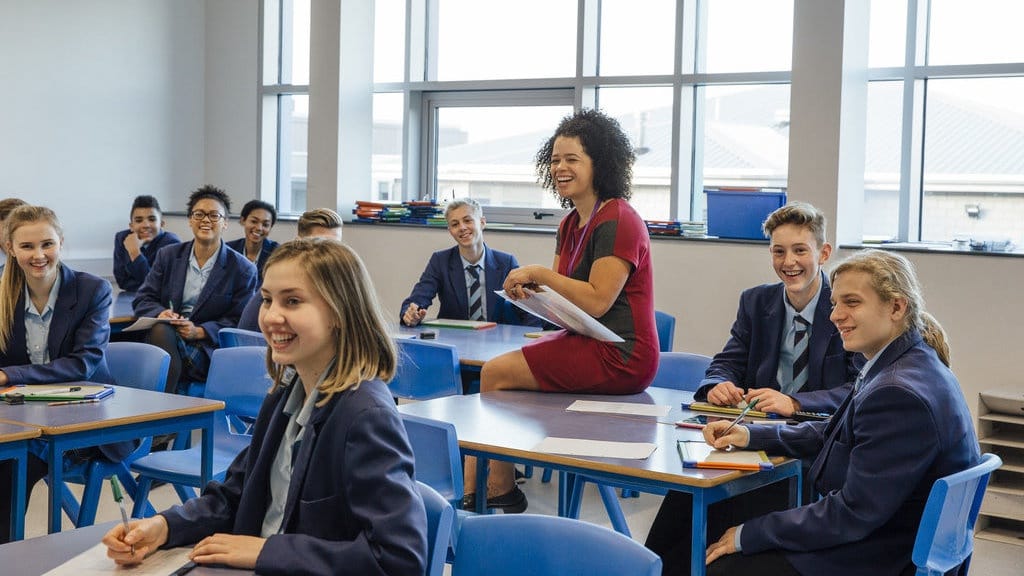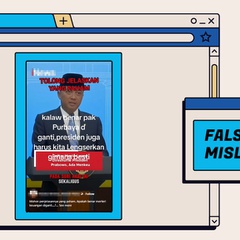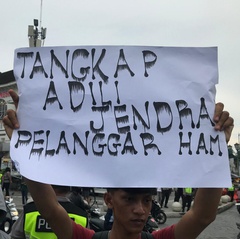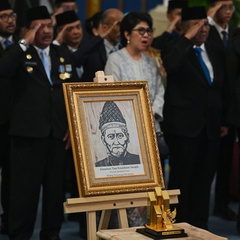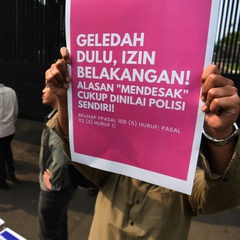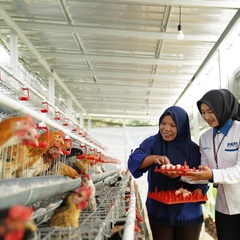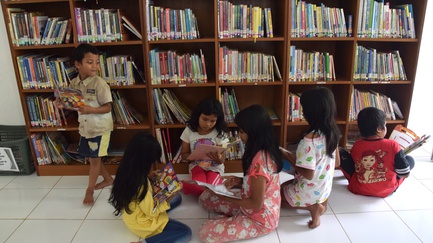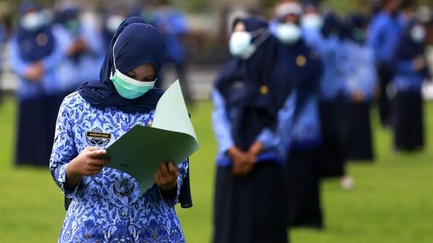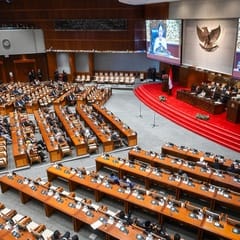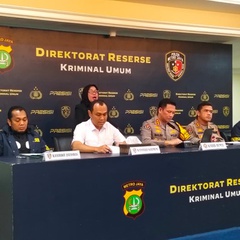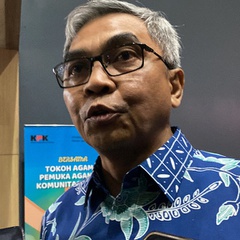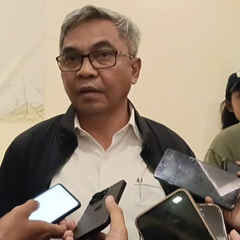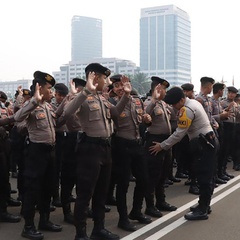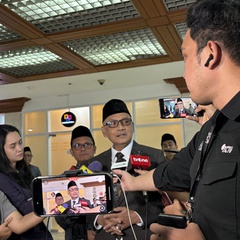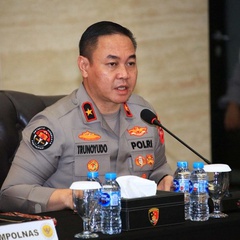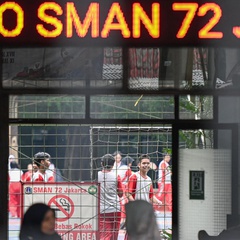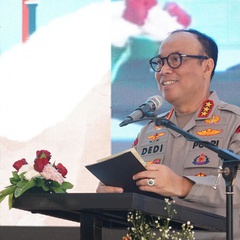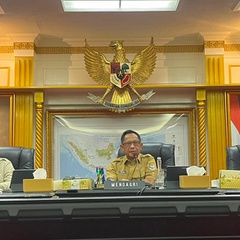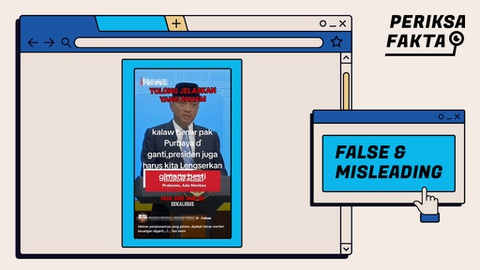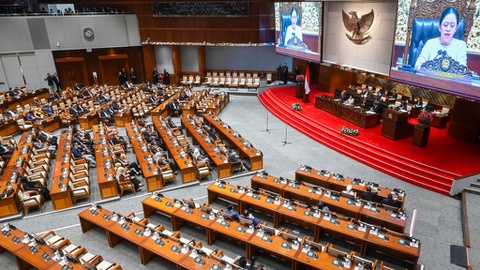tirto.id - Terdapat beberapa macam teks formal dalam Bahasa Inggris. Salah satunya hortatory exposition text, materi yang masuk dalam Kurikulum Merdeka mata pelajaran Bahasa Inggris kelas 11 SMA. Apa itu hortatory exposition text? Bagaimana ciri dan strukturnya?
Menukil penjelasan Modul Pembelajaran SMA Bahasa dan Sastra Inggris terbitan Kemendikbud, hortatory exposition text adalah teks yang ditulis berdasar pemikiran penulis terhadap suatu gagasan atau isu, dengan tujuan memberi saran pada pembaca.
Sebagaimana analytical exposition text, contoh jenis hortatory exposition text juga dapat ditemukan dalam tulisan ilmiah, buku, jurnal, koran, pidato akademik, penelitian, dan sebagainya.
Lantas, apa perbedaanhortatory exposition text dengan analytical exposition text? Keduanya memiliki perbedaan dari segi fungsi.
Singkat kata, analytical exposition digunakan untuk menyadarkan pembaca terhadap isu penting menggunakan analisa. Sementara itu hortatory exposition lebih memaksa pembaca untuk setuju, bahkan mengikuti instruksi penulis.
Oleh karenanya, selalu terdapat tesis dalam hortatory exposition, diikuti argumen untuk memperkuat pemikiran penulis, serta tawaran rekomendasi pada akhir pembahasan.
Ciri-ciri Hortatory Exposition
Berdasar penjelasan awal di atas, berikut ciri-ciri hortatory exposition text.
- Menitikberatkan pada gagasan penulis;
- Menggunakan abstract noun;
- Menggunakan action verb;
- Menggunakan modal adverb, misalnya certainly;
- Menggunakan temporal connective, semisal firstly, secondly, dll;
- Menggunakan evaluative words, semisal valuable, trustworthy, dll;
- Menggunakan passive voice.
Struktur Teks Hortatory Exposition
Struktur hortatory exposition text terdiri dari:
- Tesis.
- Argumen.
- Rekomendasi.
Penting untuk digarisbawahi, perbedaan analytical exposition dengan hortatory exposition text juga terletak pada pembahasan di akhir tulisan. Jika analytical exposition diakhiri dengan kesimpulan atas suatu analisa, hortatory exposition text diakhiri dengan rekomendasi untuk mempengaruhi pembaca.
Contoh Hortatory Exposition Text
Simak contoh berikut agar lebih mudah memahami struktur hortatory exposition text.
Judul: Students should be Allowed to Use Mobile Technologies in Class
Isu dan Tesis awal
For hundreds of years, education has been closely connected to writing. Professors had been writing down their lectures, and students had been keeping notes after their teachers. Goose feathers and parchment changed to ballpoint pens and paper.
With the emergence and development of mobile technologies, students nowadays tend to use smartphones or laptops in class more often than pens and paper. There are many arguments in favour of doing so.
Argumen 1
First of all, let us face reality: people do not write as much today as they used to several years ago. This is especially true in the case of the youth: teenagers and young adults tend to feel more confident and comfortable typing on their devices rather than with handwriting. Keeping records after a teacher in class requires a student to write extremely fast, which often decreases the readability of the notes taken.
Sometimes it can be extremely difficult for a student to understand what he or she hurriedly wrote down in class. At the same time, typing on a smartphone or laptop helps write the important information down in a comprehensible and accurate way. Also, handwriting always involves grammatical mistakes, typos, blots, and so on.
Penjelasan Argumen 1
- Tesis: "First of all, let us face reality: people do not write as much today as they used to several years ago."
- Argumen pendukung: "..teenagers and young adults tend to feel more confident and comfortable typing on their devices typing on a smartphone or laptop helps write the important information down in comprehensible and accurate way handwriting always involves grammatical mistakes, typos, blots, and so on."
Argumen 2
Secondly, technology is something youth nowadays have got so accustomed to that without it, they operate less efficiently. Students are native to such devices as smartphones, laptops, tablets, and other gadgets, and naturally incorporate them in whatever they do, be it leisure time or studying.
Not allowing students to use smartphone and laptop in class means to deprive them of something that is almost a part of them and of their daily lives. If young people know how to use technology to their advantage and increase their studying effectiveness with its help, why forbid them from doing it?
Penjelasan Argumen 2
- Tesis: "Secondly, technology is something youth nowadays have got so accustomed to that without it, they operate less efficiently."
- Argumen pendukung: ".. Students are native to such devices as smartphones, laptops, tablets, and other gadgets, and naturally incorporate them in whatever they do, be it leisure time or studying." "....Not allowing students to use tablets in class means to deprive them of something that is almost a part of them and of their daily lives."
Thirdly, the use of mobile technologies helps make the studying process more engaging for students. For example, there are teachers who like to illustrate their lectures with photographs, charts, or interactive graphics.
If students are using smartphone or laptop, a teacher can send them supplementary educational materials via email or in social media. Or, students may be able to look up contradictory and/or insufficient information during the course or a lecture, and ask questions immediately.
Smartphone and laptop also allow changing the format of teaching. Some teachers develop experimental ways of lecturing, and these new methods tend to show promising results. Needless to say such formats of studying are more appealing to young people who value their freedom and time, and prove to be extremely effective.
Penjelasan argumen 3:
- Tesis: "Thirdly, the usage of mobile technologies helps make the studying process more engaging for students."
- Argumen pendukung: "There are teachers who like to illustrate their lectures with photographs, charts, or interactive graphics." "...If students are using smartphone or laptop, a teacher can send them supplementary educational materials via email or in social media." "...Some teachers develop experimental ways of lecturing, and these new methods tend to show promising results."
Based on the arguments above, allowing students to use smartphone and laptop in class would be a small but substantial change. Modern students are digital natives, and can effectively use technologies to their advantage.
They would be able to not just take notes on lectures more effectively, but would also eagerly engage in new forms of studying such as remote studying, using interactive online materials, and so on.
Penulis: Rofi Ali Majid
Editor: Fadli Nasrudin
 Masuk tirto.id
Masuk tirto.id